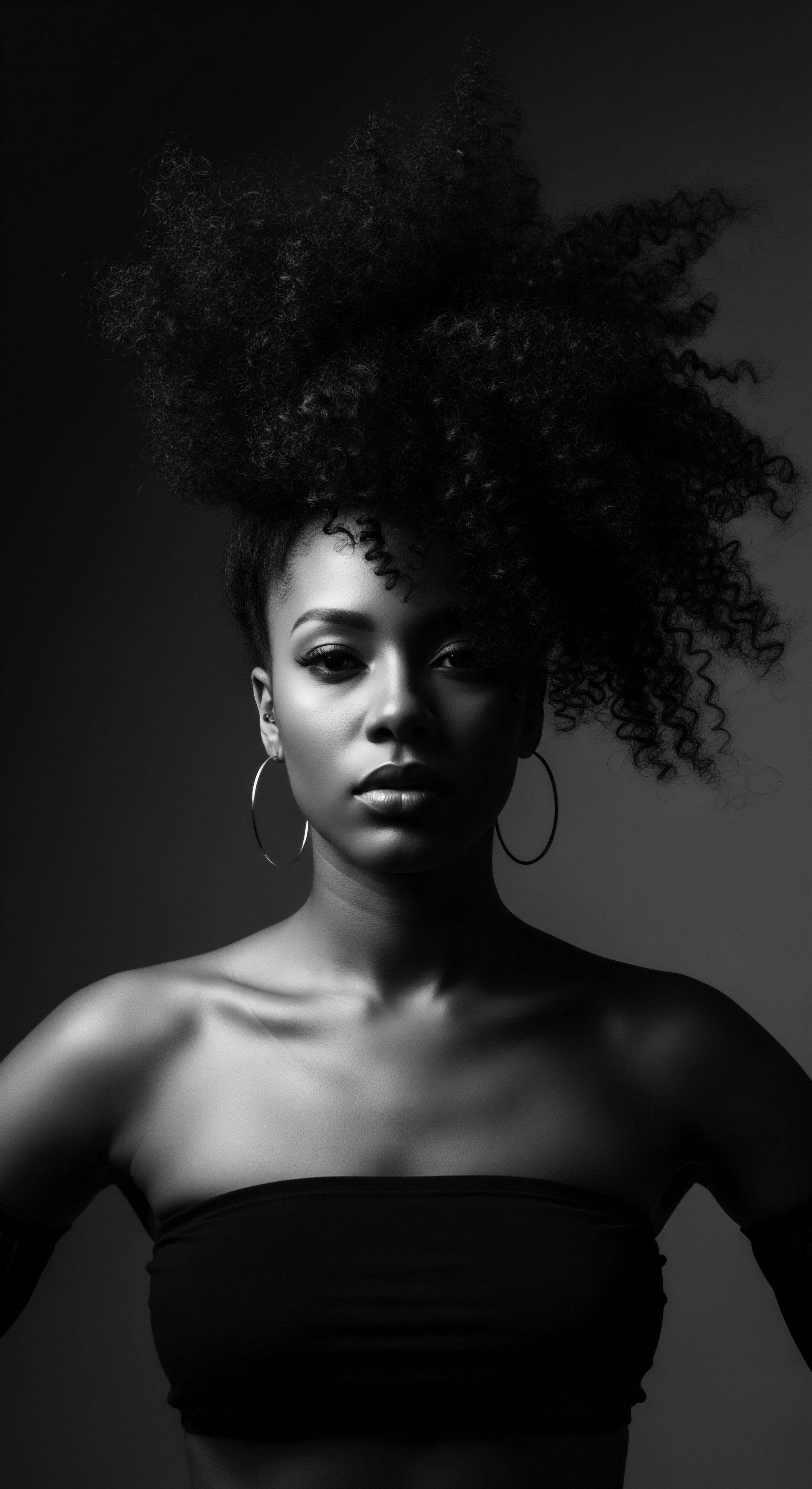
Roots
Hear the whispered stories carried on the winds of time, tales woven into each coil and curve of textured hair. For generations, before the clamor of modern science, our ancestors understood a truth often forgotten ❉ the hair gracing our heads, especially its intricate, coiling forms, holds a vital, vibrant life. This understanding, a deep current flowing through textured hair heritage , forms the very bedrock of how historical head coverings became guardians of overnight care.
Consider the elemental biology, the very architecture of a strand. Textured hair, with its unique elliptical cross-section and uneven distribution of disulphide bonds, possesses a natural propensity for dryness. Its helical shape, while exquisitely beautiful, means the hair’s outer layer, the cuticle , lifts more readily at each bend. This exposed cuticle, a natural wonder, is also a site for moisture escape and vulnerability to friction.
Over countless nights, as our forebears slept, this delicate structure was exposed to rough surfaces, to the very air, inviting breakage and moisture depletion. The solution, born of observation and ancestral wisdom, manifested in the simplest yet most profound of forms ❉ the head covering.
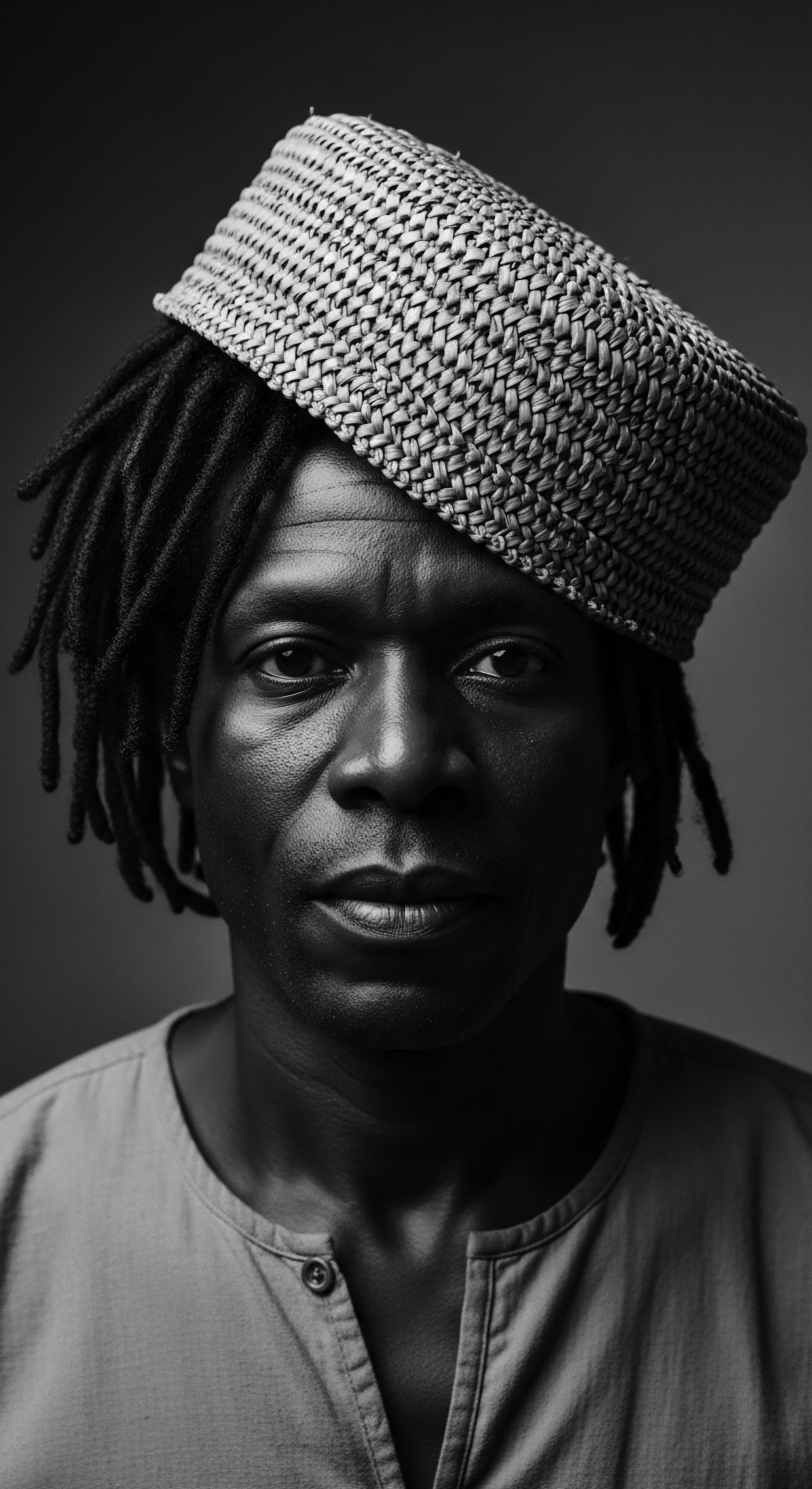
Anatomy of a Strand Protected by Ancestry
The fundamental understanding of hair anatomy, while not articulated in scientific terms, was deeply ingrained in the daily practices of diverse African and diasporic communities. They observed, they adapted, they cared. The act of enveloping hair before slumber, a practice spanning continents and centuries, speaks to an innate comprehension of this vulnerability. It speaks to a deep respect for the hair’s very life force.
- Cuticular Integrity ❉ The outermost layer of hair, often likened to shingles on a roof, guards the inner cortex. Historic coverings helped keep these “shingles” flat, preventing snagging and lifting from night movement.
- Moisture Preservation ❉ Textured hair’s structure allows moisture to escape more readily. Enclosing the hair creates a microclimate, a humid haven that slows evaporation during hours of rest.
- Elasticity Retention ❉ Well-hydrated hair maintains its stretch and bounce, resisting breakage. Head coverings assisted in maintaining optimal moisture levels, preserving this crucial quality.

From Earth to Evening Rituals
The materials chosen for these coverings were not arbitrary. They were gifts from the earth, selected for their innate qualities. Smooth, breathable fabrics like cotton , then later silk (as trade routes broadened), offered a gentle caress, a barrier against the abrasive nature of sleeping surfaces.
This discerning choice underscores a practical genius, a deep scientific understanding expressed through action rather than formalized study. The evening ritual of securing the hair, therefore, was a precise act of physiological protection, masquerading as a simple, familial custom.
Historical head coverings provided a crucial barrier against friction and moisture loss, preserving the delicate structure of textured hair during sleep.
| Hair Component Vulnerability Cuticle Damage from friction |
| Historical Covering Action Smooth fabric acts as a gentle shield, preventing lifting and snagging. |
| Modern Scientific Analogue Reduced mechanical stress, maintaining cuticle flatness. |
| Hair Component Vulnerability Moisture Evaporation from air exposure |
| Historical Covering Action Enclosure creates a localized humid environment, trapping water. |
| Modern Scientific Analogue Decreased transepidermal water loss (TEWL) for hair strands. |
| Hair Component Vulnerability Strand Weakening due to dryness |
| Historical Covering Action Hydration preservation aids in maintaining hair's natural flexibility. |
| Modern Scientific Analogue Enhanced elasticity and tensile strength through moisture retention. |
| Hair Component Vulnerability These ancestral practices intuitively addressed the biological needs of textured hair, echoing contemporary scientific understanding. |

Ritual
Beyond the purely biological, the act of covering one’s hair at night transformed into a sacred ritual , a tender thread connecting daily practice to profound ancestral wisdom. These rituals were not merely about safeguarding strands; they wove a protective cloak around identity, preserving styles, and extending the life of intricate designs. They spoke of a community’s shared knowledge, passed down through the gentle hands of mothers, grandmothers, and aunties.

Guardians of Overnight Adornment
Think of the elaborate cornrows, the meticulous twists, the carefully sculpted coils that might have taken hours, even days, to craft. These styles were often more than aesthetic choices; they marked status, conveyed marital standing, signified tribal affiliation, or served as spiritual expressions. To preserve such artistic expressions through the night was a testament to their deep cultural meaning. Head coverings, whether simple cloths or intricately wrapped fabrics, became essential tools in this preservation.
They minimized the friction that could unravel a braid, flatten a coil, or disturb the delicate alignment of a twist. The effort of styling, an act of creation often shared within communal settings, was thus honored and extended by the nightly ritual.
Nightly hair coverings became integral to preserving intricate hairstyles, reflecting their cultural and personal significance within communities.
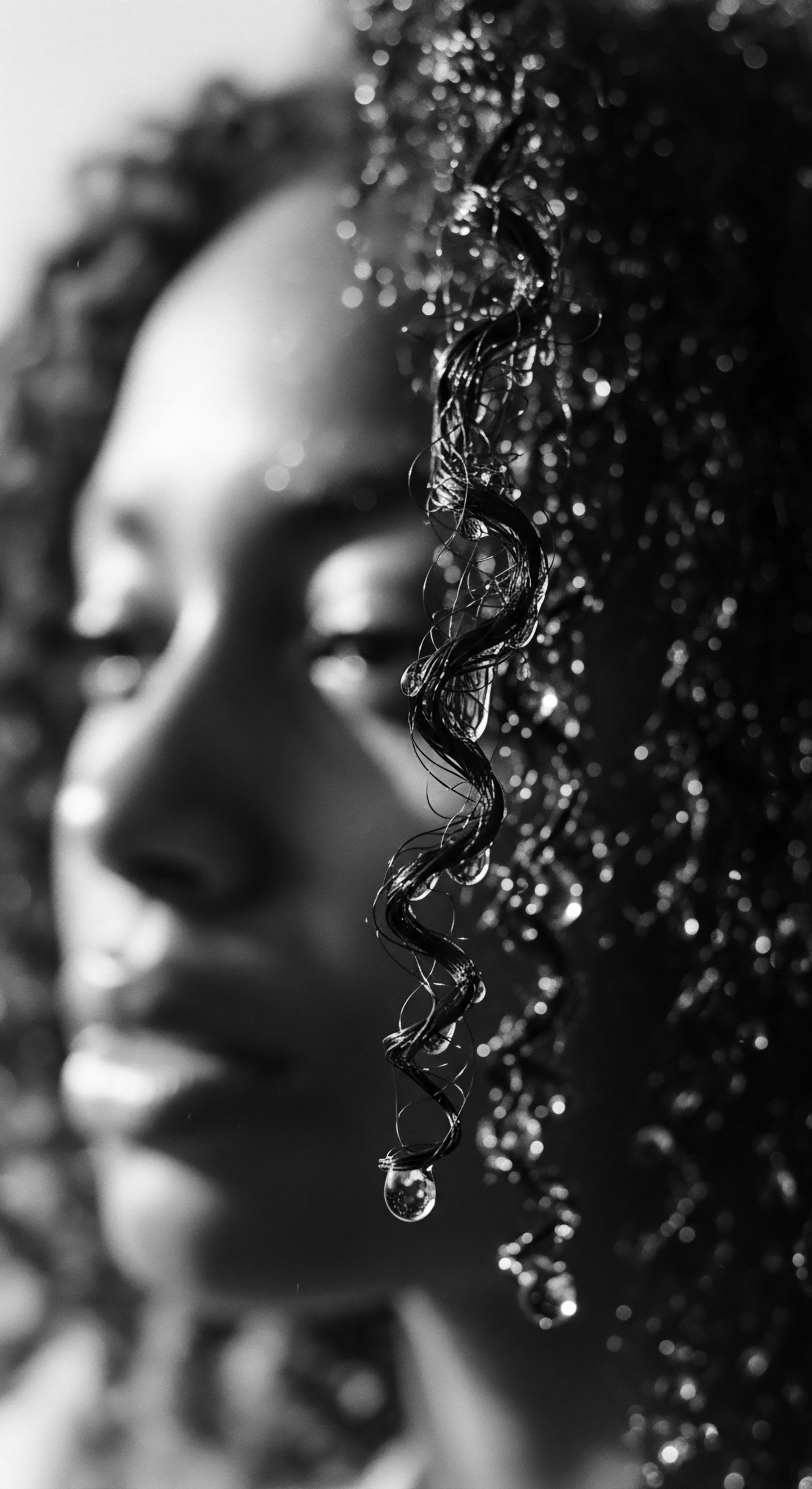
The Silk Secret and Its Ancestral Echoes
While silk is often associated with modern hair care, the understanding of smooth surfaces for hair protection has deep roots. Long before mass production, the concept of a slick, non-absorbent material was recognized. Even natural cotton , when woven finely and smoothed, offered a better alternative to coarse sleeping mats or unadorned surfaces. As trade expanded, the properties of silk, its smooth fibers gliding over the hair rather than snagging, made it a highly prized material for hair care, becoming a symbol of advanced protection.
The material’s ability to reduce friction is paramount. Each strand of textured hair, already prone to dryness, becomes even more fragile when subjected to constant rubbing. Such friction not only roughens the cuticle, leading to frizz and dullness, but also weakens the hair shaft itself, precipitating breakage. The smooth surface of a well-chosen head covering acts as a gentle buffer, allowing hair to glide freely during sleep, a quiet act of preservation against the unseen forces of friction.
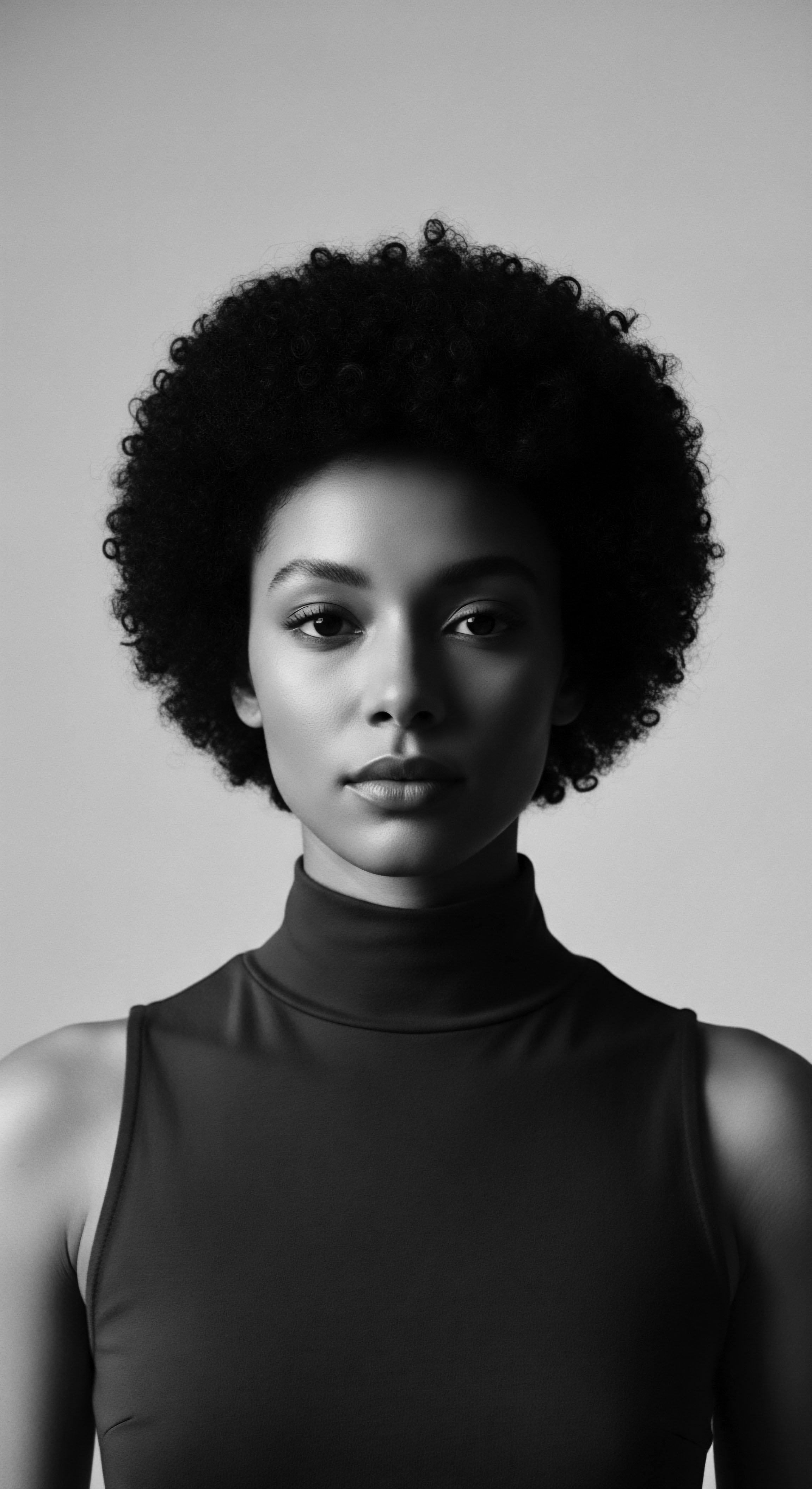
A Legacy of Care Across Continents
The breadth of these practices across the African diaspora is remarkable. From the geles of West Africa, meticulously tied headwraps that served as both fashion statement and hair protection, to the various forms of tignons worn by free women of color in colonial Louisiana, mandated yet transformed into symbols of identity and beauty, the underlying principle remained. These coverings were not just about modesty or fashion; they were a pragmatic, generational strategy for hair health and preservation.
The oral traditions that accompanied these practices speak volumes. Stories of hair as a conduit for spiritual energy, as a map of one’s lineage, or as a crown of wisdom were passed down. The nightly wrapping or covering of hair became a tangible expression of this reverence, a quiet moment of self-care steeped in collective memory.
- West African Geles ❉ Often made from elaborate fabrics, these headwraps secured styles and protected hair, particularly important given the dry climate and active lifestyles.
- Caribbean Headwraps ❉ In various island nations, headwraps, while sometimes imposed, were reappropriated to protect hair from the sun and humidity, maintaining styles overnight.
- African American Bonnets ❉ Evolving from earlier head coverings, bonnets became a domestic staple, preserving delicate curl patterns and braids for ease of morning styling.
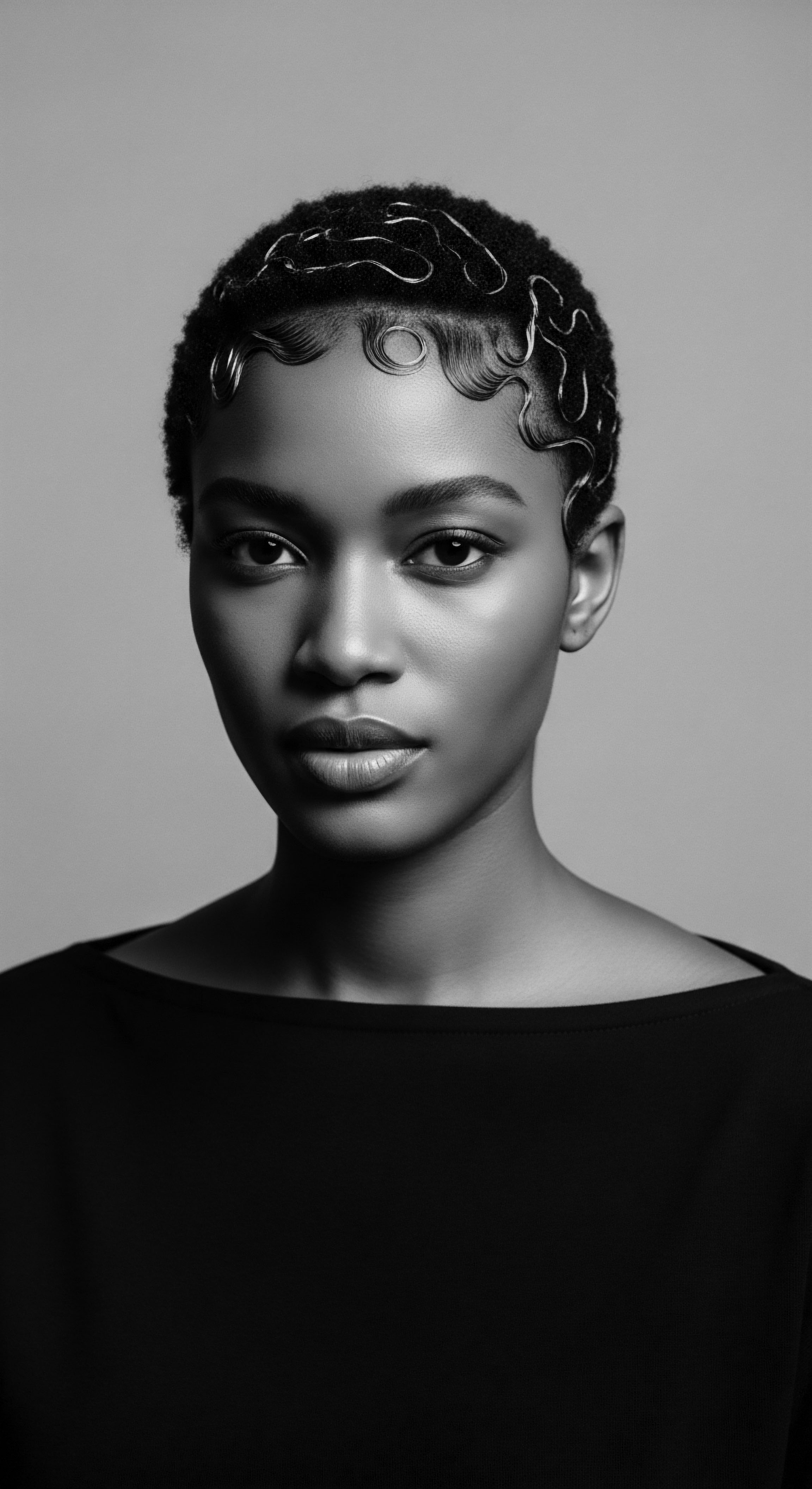
Relay
The historical head covering’s protection of textured hair overnight represents a profound relay of ancestral ingenuity , a testament to practical science born from necessity and cultivated over centuries. This practice, often seen as a simple cultural artifact, carries a depth of understanding that modern trichology now affirms. The how of this protection is not coincidental; it is a meticulously evolved response to the unique biomechanical properties of textured hair, transmitted through generations.

Minimizing Mechanical Stress and Fatigue
Textured hair, characterized by its bends and twists, is inherently more susceptible to mechanical damage. Each curve in the hair shaft acts as a point of structural weakness, making it vulnerable to breakage from friction and tension. During sleep, tossing and turning can subject hair to considerable mechanical stress against pillows, bedding, or even other hair strands. This repeated stress leads to what is known as fiber fatigue , akin to bending a wire back and forth until it breaks.
Historical head coverings, particularly those made from smooth, tightly woven materials like fine cotton or later, silk, served as a crucial buffer. They created a frictionless interface between the hair and the sleeping surface. This simple, yet revolutionary, act dramatically reduced the direct mechanical abrasion on the hair shaft, preserving its structural integrity. The reduction of this nightly fatigue meant less breakage, fewer split ends, and ultimately, healthier, longer-retained hair.
Research by McMichael (2007) details the significant impact of surface friction on the outer hair cuticle, noting that textiles with a higher coefficient of friction cause greater cuticle damage and increased fiber fatigue in hair, particularly those with higher curl patterns. This observation precisely validates the ancestral preference for smooth fabrics.

Maintaining the Moisture Balance of the Helix
The helical nature of textured hair also means its cuticle layer often does not lie as flat as that of straight hair, creating more surface area for moisture to escape. Air, especially dry indoor air, actively pulls moisture from the hair, leading to dehydration. This is particularly problematic overnight, as eight or more hours of exposure can significantly deplete the hair’s natural hydration.
Head coverings addressed this directly by creating a micro-environment around the hair. By enclosing the hair, these coverings reduced the rate of transepidermal water loss (TEWL) from the hair shaft. The trapped moisture within the covering created a localized humidity, slowing evaporation and maintaining the hair’s natural moisture balance. This sustained hydration is fundamental to hair’s elasticity and strength.
Hydrated hair is pliable; dry hair is brittle. The nightly ritual of donning a head covering was a conscious, protective act against dehydration, a science of preservation passed down through collective experience.

The Head Covering as a Biocultural Innovation
Can one truly appreciate the legacy of a simple cloth? Absolutely. The historical head covering is a prime example of a biocultural innovation . It is a solution that arises from the interplay of biological understanding (of hair) and cultural practices (care rituals).
This understanding was not gleaned from laboratories but from generations of lived experience, observation, and adaptation. The wisdom embedded in these practices extended beyond individual care; it reinforced communal ties, as hair care often occurred in shared spaces, and it solidified cultural identity.
Consider the “tignon laws” enacted in Louisiana in the late 18th century, which mandated that free women of color cover their hair. While intended as a measure of social control, these women subverted the intent, transforming the tignon into elaborate, vibrant, and stylish headwraps. This act of defiance simultaneously protected their hair physically and asserted their identity and artistry culturally (White, 2017).
This specific historical instance shows how a forced measure became a vehicle for maintaining physical hair health and asserting cultural pride, demonstrating the inherent resilience of textured hair heritage. The covering, in this context, was not just a protector from physical elements but also a shield of identity against oppressive forces.
Historical head coverings exemplify a biocultural innovation, reducing fiber fatigue and preserving hair hydration through generations of embodied knowledge.
The knowledge of specific fibers and their impact on hair was also relayed through generations. While silk is now lauded for its hair-protective qualities, the properties that make it effective—its smooth, long fibers and low absorbency—were intuitively understood. Even cotton, when properly prepared and finely woven, can reduce friction compared to rougher materials.
The choice of material was not arbitrary; it was a testament to empirical knowledge gained from observing hair’s response to various surfaces. This practical material science, passed down, forms a significant, yet often unwritten, chapter in the history of textured hair care .
- Friction Reduction ❉ The smooth surface of coverings allowed hair strands to glide, minimizing physical wear and tear during sleep.
- Moisture Seal ❉ Enclosing the hair within a covering created a humidor effect, preventing the escape of natural oils and added moisture.
- Style Preservation ❉ Keeping hair undisturbed overnight prolonged the life of intricate styles like braids, twists, and locs, reducing the need for frequent restyling and manipulation.

Reflection
To gaze upon a historical head covering, whether a meticulously tied gele, a flowing scarf, or a simple bonnet, is to witness more than a textile. It is to behold a silent testament to the enduring genius of those who came before us. These seemingly humble garments, born of ancestral wisdom and practical need, stand as potent symbols of textured hair heritage , whispers of a time when care was intrinsically linked to survival, identity, and the quiet preservation of beauty. They remind us that the ‘Soul of a Strand’ is not merely a poetic notion; it is a living, breathing archive of resilience, ingenuity, and profound connection to our past.
The journey from elemental biology to sophisticated cultural practice, from simple protection to a statement of defiance, encapsulates the rich narrative of textured hair. These coverings, in their very threads, embody a legacy of safeguarding, not just against the physical wear of night, but against the erosion of selfhood in challenging times. They teach us that true wellness for textured hair extends beyond superficial treatments, reaching into the deep wellspring of our collective memory.
As we continue to learn and innovate, the profound lessons from these historical practices illuminate our path forward, reminding us that the deepest care often lies in honoring the ancient whispers that guide our hands, ensuring the radiance of every coil and every curl continues to shine, unbound and resplendent, for generations yet to come. The heritage of these coverings is not a relic of the past; it is a vibrant, living force, continually shaping our understanding of care, identity, and the beauty of textured hair.
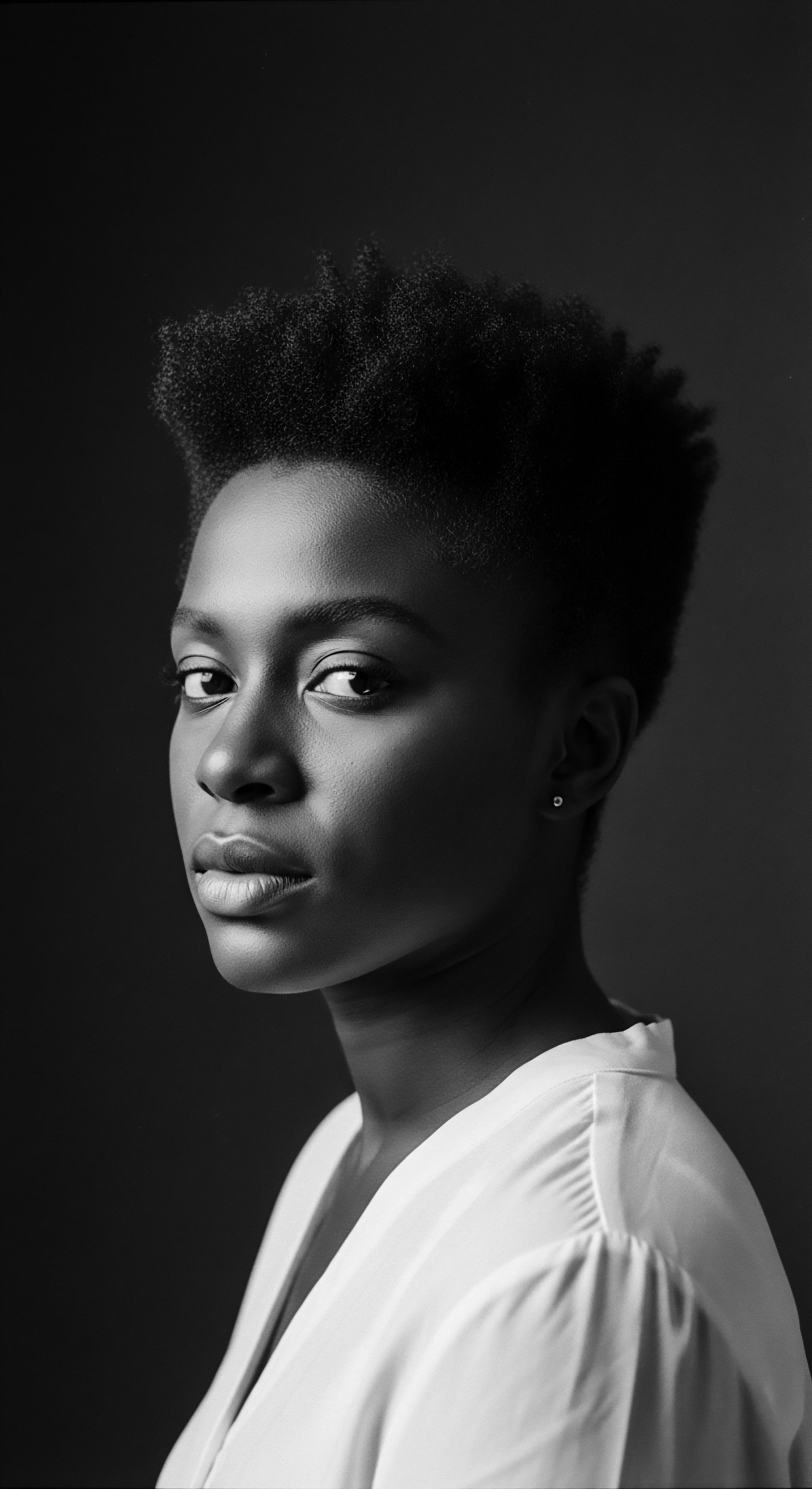
References
- McMichael, A. J. (2007). Hair and Scalp Disorders ❉ Medical and Surgical Management. Informa Healthcare.
- White, S. (2017). The Head Tie in the Antebellum South. The Journal of Dress History.
- Byrd, A. D. & Tharps, L. L. (2001). Hair Story ❉ Untangling the Roots of Black Hair in America. St. Martin’s Press.
- Mercer, K. (1994). Welcome to the Jungle ❉ Identity and Culture in Postmodern Contemporary Art. Routledge.
- Banks, I. (2000). Hair ❉ A Cultural History. W.W. Norton & Company.
- Jackson, R. L. (2001). The African-American Tradition in Art. Harry N. Abrams.
- Okoro, O. (2018). Hair Politics ❉ The Cultural Significance of Black Women’s Hair in the African Diaspora. Palgrave Macmillan.
